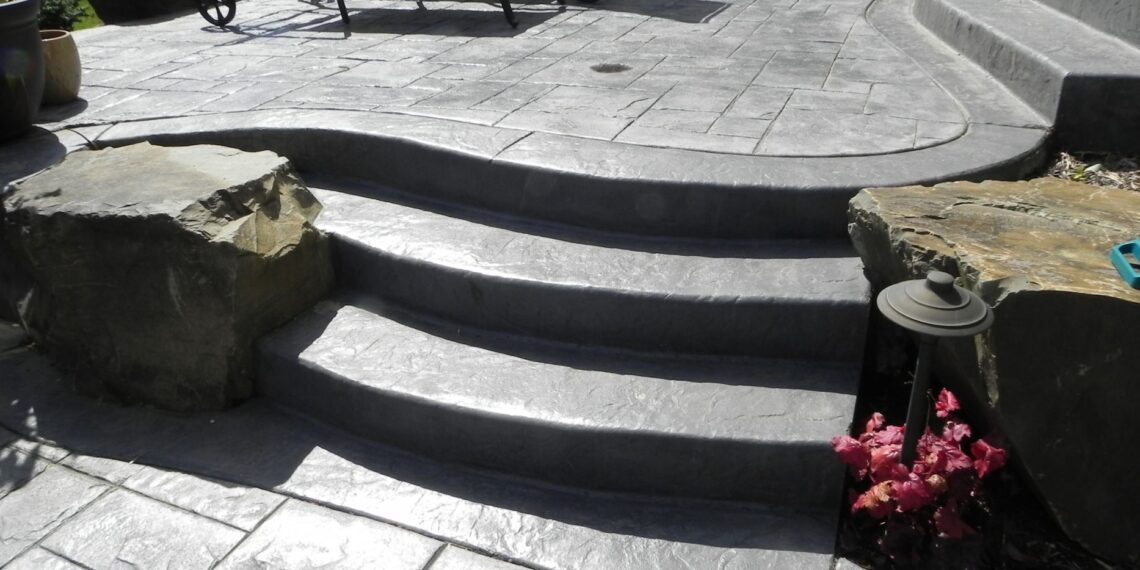A colored concrete that has texture and a pattern that looks like a brick, stone, or tile is known as stamped Concrete. The stamping technique gives you a variety of designs and styles of Slate, brick, cobblestone, or wood.
Improving your floors by designing stamped Concrete is a delightful and reasonable option in contrast to normal pavers or plain poured Concrete. You can truly accomplish any sort of look you need for your floors.
Step-by-Step process of stamping Concrete
Stamped Concrete includes charm and is amazing for your domestic floors. Individuals are choosing Stamped Concrete for their garages, patios, and gardens to beautify their looks.
Stamped concrete installation can be difficult, and you might run into some problems if you haven’t planned it.
Planning and Preparation
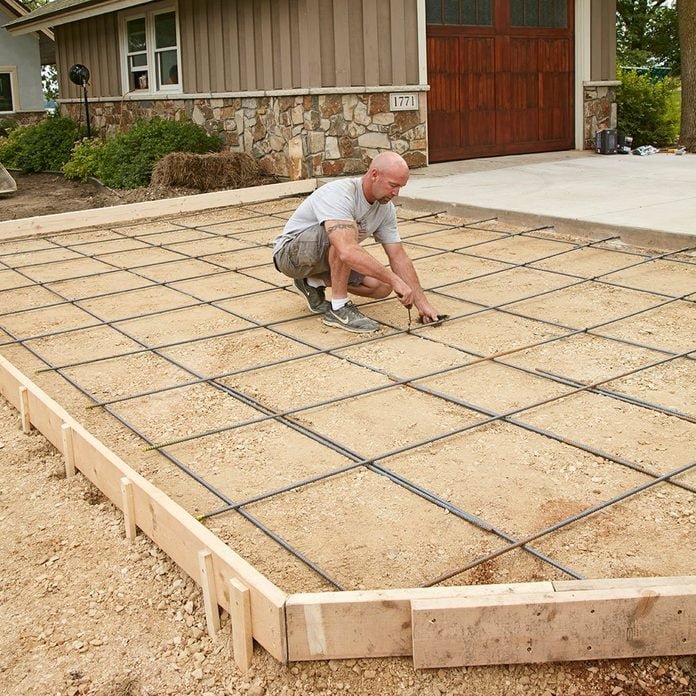
While it may be tempting to focus all your efforts on the slab itself, the surface directly beneath the Concrete is equally important to the long-term appearance and durability of your project.
As the soil beneath a concrete slab moves, it can cause cracks to form over time. Before you begin, you must carefully consider the intended depth of the concrete slab and remove all topsoil, rock, and organic matter. Using Sand or Gravel is a considerable idea to prepare settled soil for the stamped Concrete.
Tools and Materials

The materials and tools needed for a stamped concrete floor are:
- Coarse aggregate
- >Water cement roller
- Railing as a side border
- Concrete mixer
- Vibration machine
- Levelling tape
- Color powder Rubber pad
- A wheeled cart Reinforced
- TMT bars of different diameters
Mixing and Pouring Concrete

When you start pouring, carefully check the viscosity of the concrete mix to make sure it is where it needs to be. Add water, about 5 gallons at a time, to bring the mixture to the correct level. This approach ensures that the final texture distribution pattern of your concrete stamp looks smooth.
Use a rail to equalize the edges and height of the poured Concrete. It helps to spread the stamped concrete structure evenly.
Adding Color and Release Agents
You can achieve the look and feel of stone, brick, Slate, and other rough materials with cut mats and shells. But to complete the effect, you must also reproduce the natural colors of these materials.
The base color is applied with a solid color or dry brush. Marking or aging colors are then applied using pigment powder or liquid highlighting agents, which can be supplemented with stains, dyes, or tints for a more natural, more varied look.
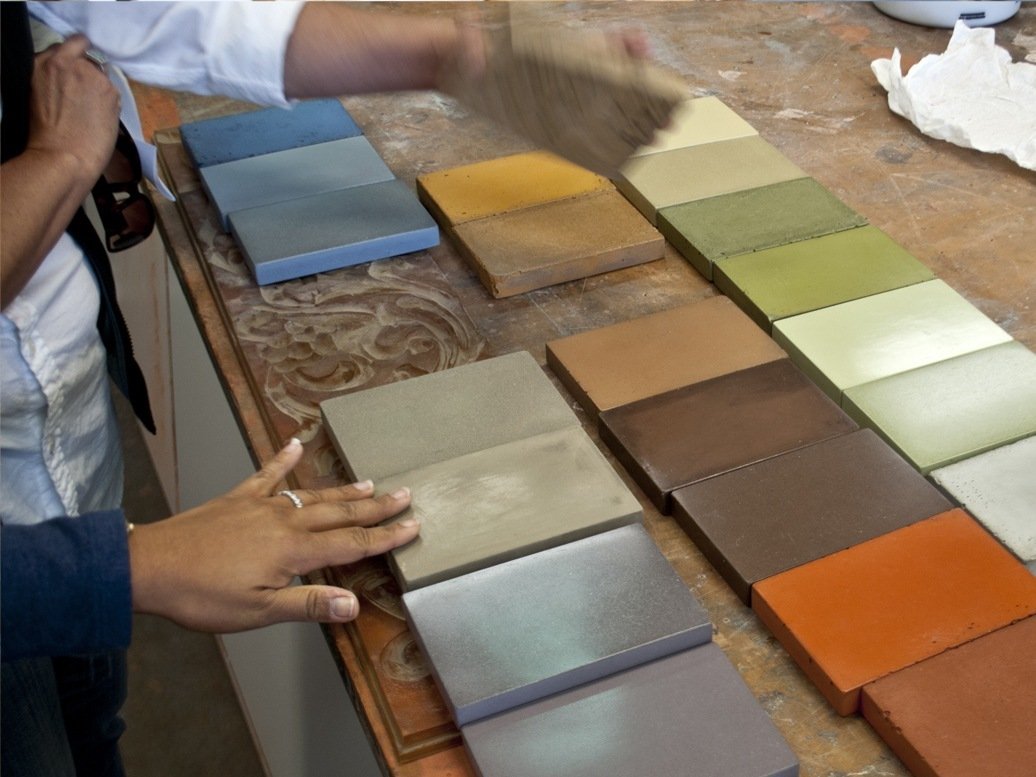
- Integrated color: Easy to use; it is mixed with Concrete in a batch plant, resulting in a uniform color. The color is permanent because it extends through the concrete matrix. If the tile is accidentally cracked or scratched, the consistent color will remain.
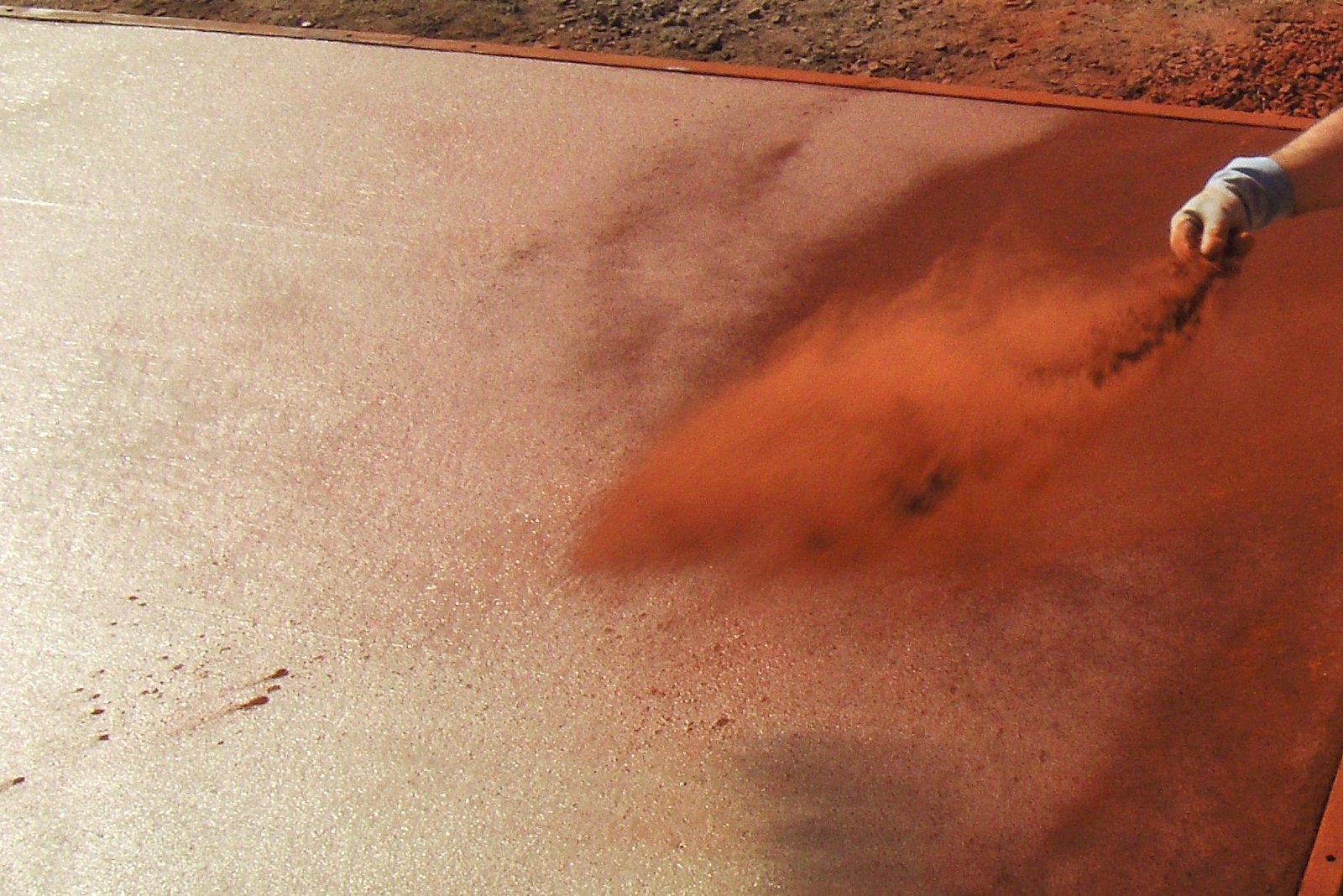
- Dry-Shake color hardeners: Produce more vibrant colors with unlimited color options. Hardeners are applied to fresh Concrete and then floated to the surface. Because the product contains fine aggregate and cement, they help seal the surface, making it less absorbent.
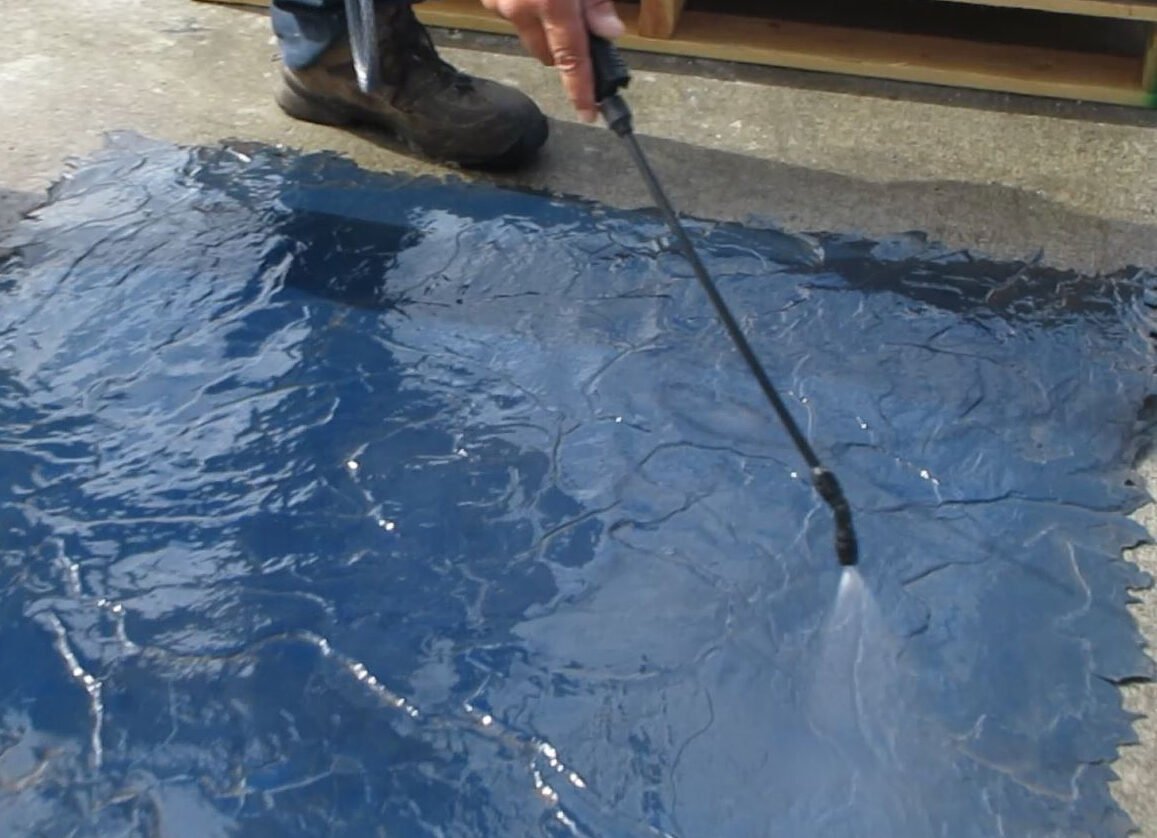
- Powder or liquid release agents: Both products help prevent stamped mats or skins from sticking to the Concrete and damaging the structure. They also provide subtle color that corrects solid or dry color that causes aging.

- Stains: chemically react with the Concrete to form a stain that gives the stamped work a sense of realism. You can apply stains randomly to individual stones with stamped designs.
Stamping Process
Stamping is usually short, especially in hot weather. The layout should be planned in advance, and the manpower should be sufficient for the volume of work.
The edges are pre-patterned first because later, when using larger stamps, these shapes can overlap and cannot sink completely into the Concrete.
The Concrete should then be stamped in the same order as it was placed. Check the alignment of the stamp regularly to ensure that the correct random pattern is being followed to ensure a realistic appearance.
Also Read Modern Stamped Concrete Pool Deck Ideas For All House Types
Curing and Finishing
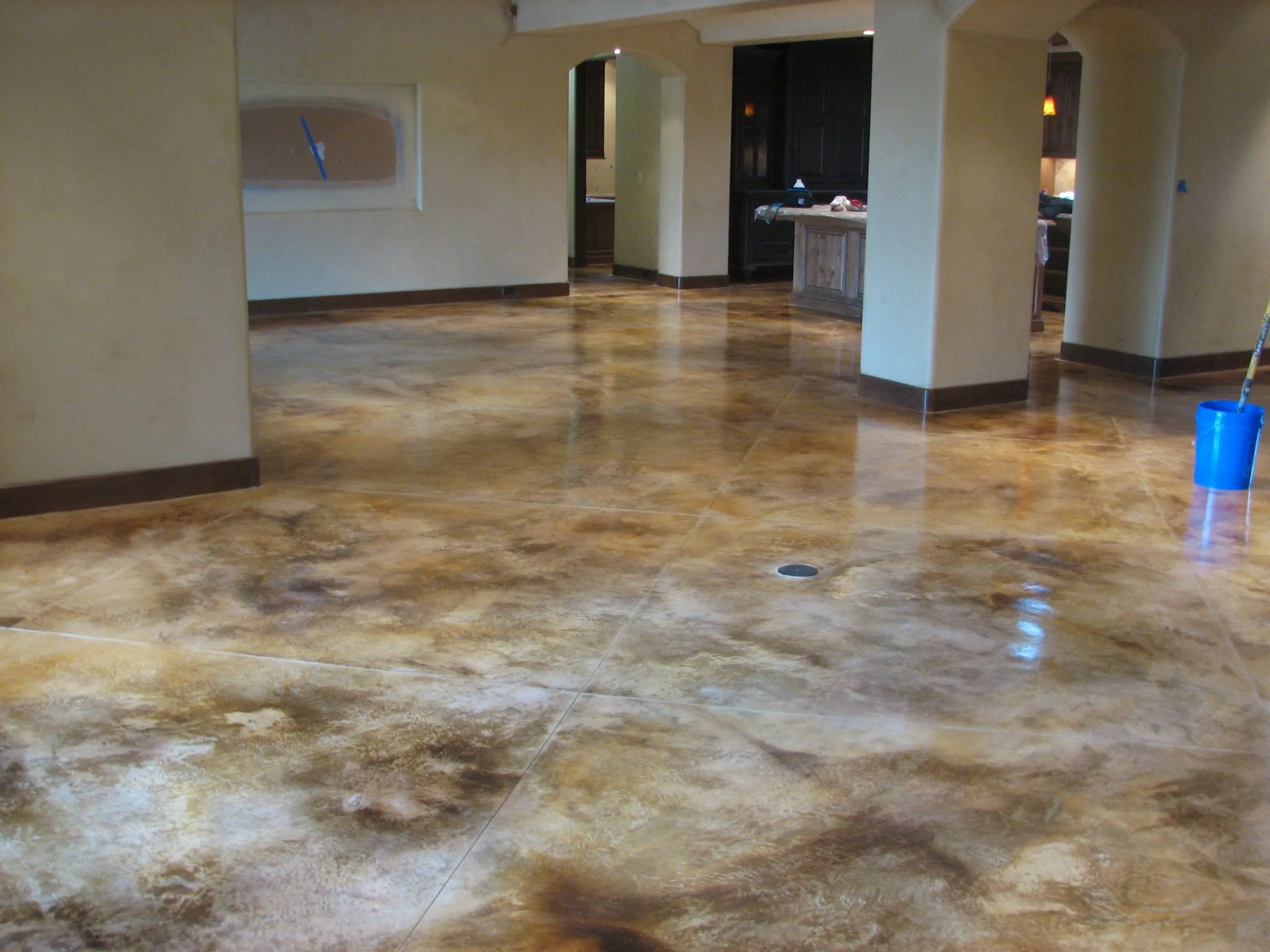
The purpose of curing or concrete drying is to maintain sufficient moisture content long enough to develop the necessary properties of the Concrete. When Concrete is properly cured, it becomes denser and less porous, increasing overall strength and durability.
Cutting compression joints helps prevent noticeable cracks. However, you can not prevent all damages due to stresses from temperature changes and drying shrinkage. Relieving tension in specific areas can help control cracking from time to time.
No decorative stamped concrete installation is complete without the use of a sealer. This is the last step and one of the most important. The sealer helps to enrich the color of the Concrete, adds gloss to the surface, reduces the possibility of efflorescence to stain the surface, and prevents the penetration of stains from dirt and chemicals.
Advantages of stamped concrete over traditional paving methods
Some of the advantages of stamped concrete over traditional paving methods are:
- Affordable– Stamped Concrete is usually more affordable than natural stone, brick, or tile. Also, the installation costs of pouring and stamping Concrete are considerably lower than for other materials.
- Customized– One of the biggest benefits that entices homeowners to use stamped Concrete on their patio or driveway is that it is highly customizable. You can customize every part of your stamped Concrete, including colors, textures, and patterns.
- Durability- Regular housing, blowing, and washing are usually sufficient to keep a concrete-stamped patio or driveway clean. Precast Concrete is also very durable when properly installed and maintained and can withstand a wide range of weather conditions.
Know more about Above-ground Swim Spa Landscaping Ideas
Conclusion
Stamped Concrete is a flooring system where stone emulations are pressed into moist Concrete with rubber stamping mats. It’s an extremely good way to create a completely unique experience outdoors or indoors, which includes pools, walkways, driveways, patios, or walls.
FAQ
Can you stamp concrete yourself?
It is not feasible to stamp concrete yourself as at least three to four people are required to complete the stamped concrete work.
How long after pouring Concrete can you stamp it?
After two hours, you can stamp the poured Concrete.
Can you stamp over existing Concrete?
Yes, you can stamp Concrete over your existing concrete structure.
How thick should stamped Concrete be?
A 4-inch thick slab is ideal for stamped Concrete.
How many times do you seal stamped Concrete?
It is good to seal stamped Concrete every five years.
